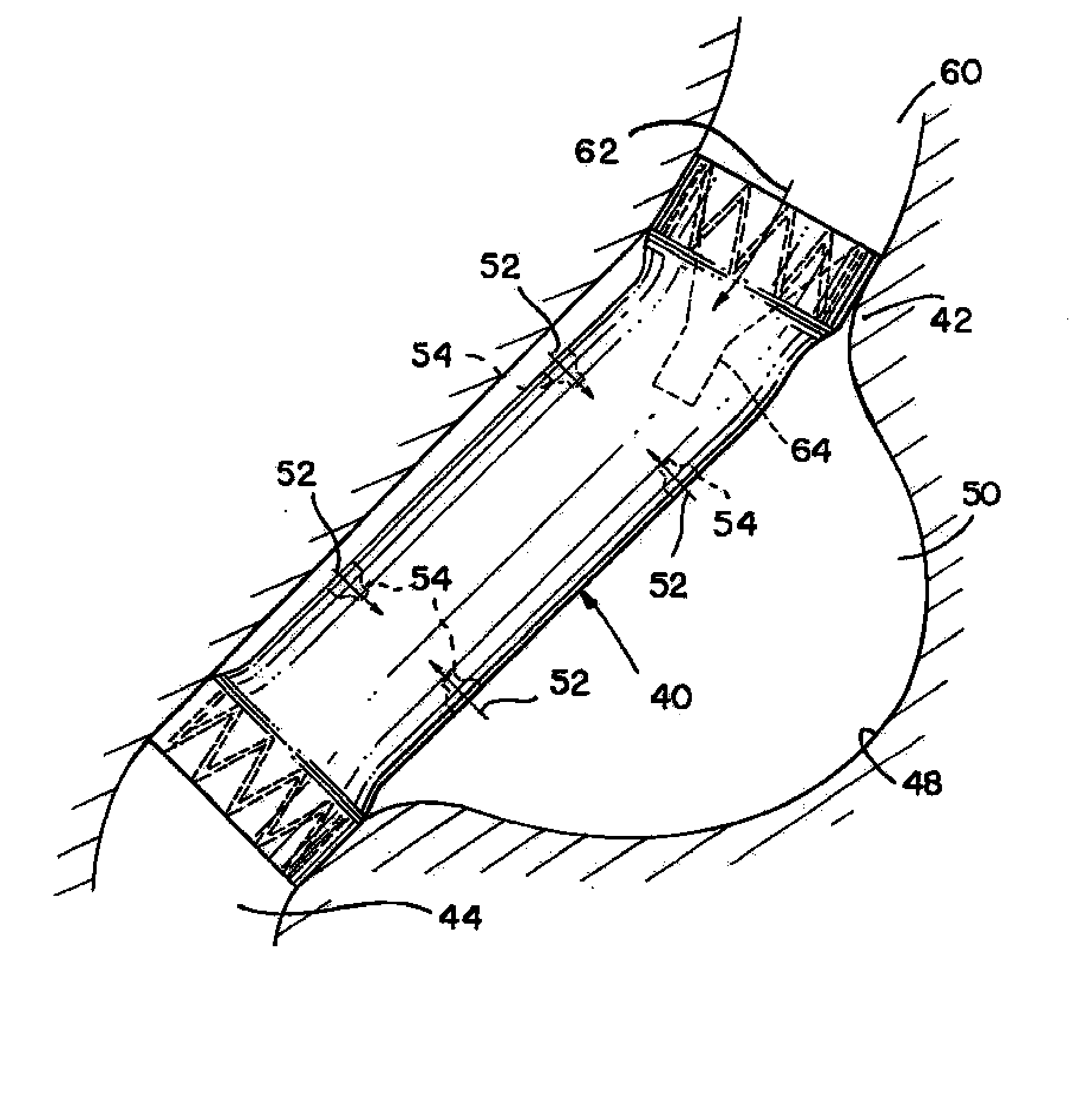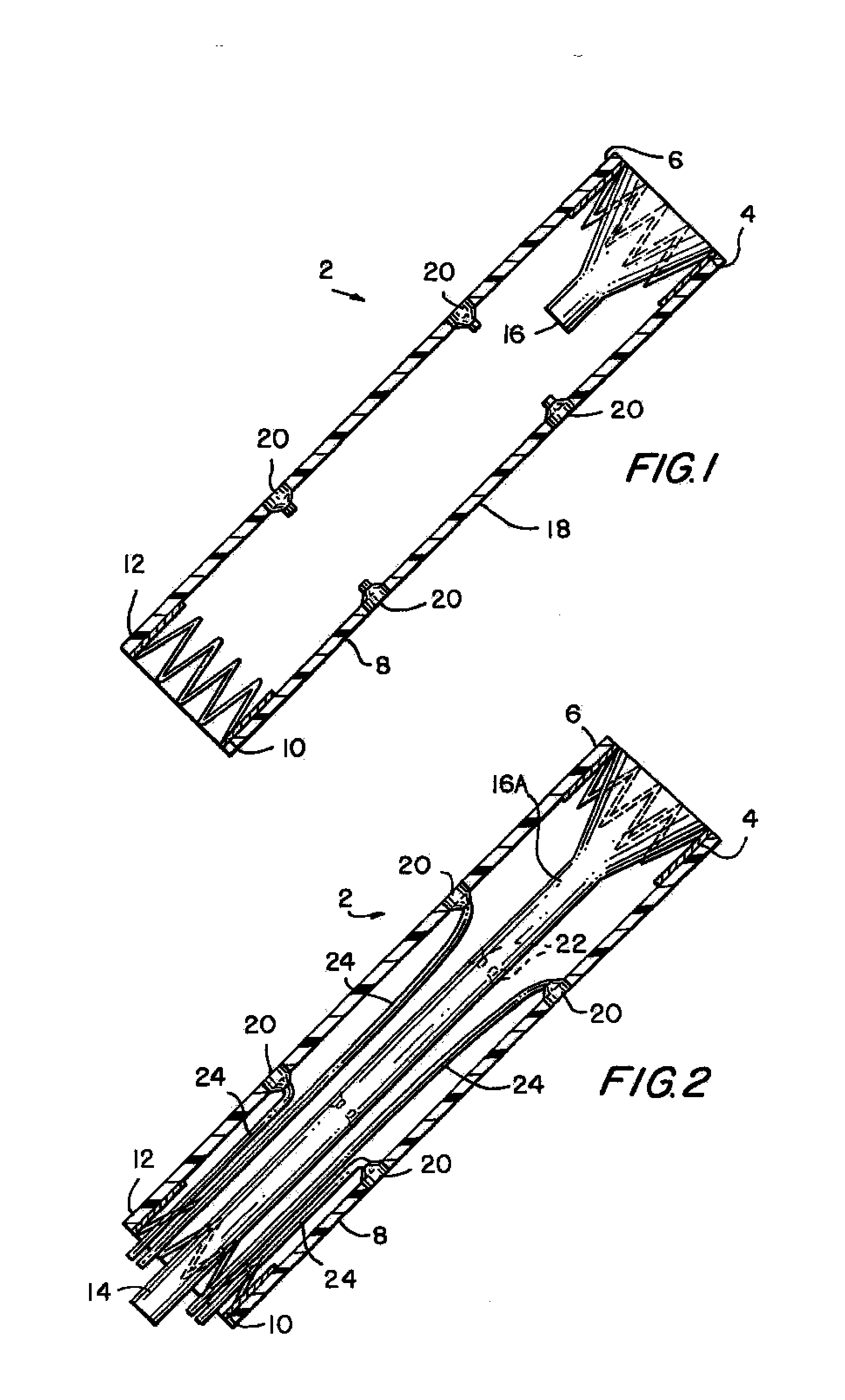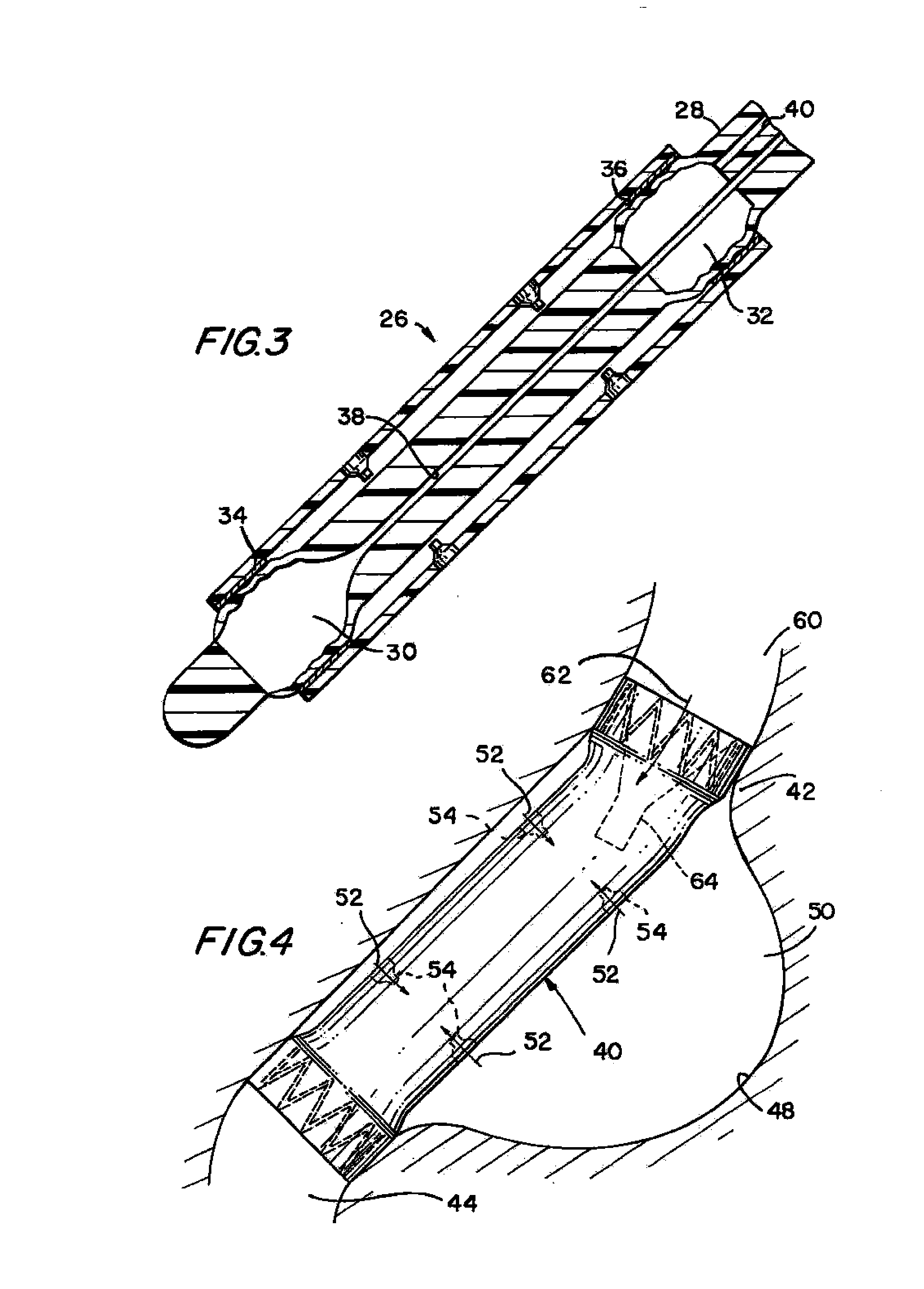Endoscopic Gastric Bypass
a gastric bypass and endoscope technology, applied in the field of endoscope gastric bypass, can solve the problems of weight loss, shortening the time of appetite, and reducing the amount of gastric bypass,
- Summary
- Abstract
- Description
- Claims
- Application Information
AI Technical Summary
Benefits of technology
Problems solved by technology
Method used
Image
Examples
Embodiment Construction
[0019] The invention can perhaps be better appreciated by making reference to the drawings. In FIG. 1, a gastric bypass stent 2 comprises a stent member 4 at the proximal end 6 of a tabular member 8 and, optionally, a stent member 10 at the distal end 12 of tubular member 8. Proximal tubular end 6 comprises a one-way valve member 16 to permit passage of food and liquid, and the wall 18 of tubular member 8 comprises one-way openings or valves 20 to permit gastric acid or fluid to flow into stent 2.
[0020] Optionally stent 2 could comprise one or more stent members 4, 10 that would together define a lumen and would have a coating or surface that would be the functional equivalent of tubular member 8.
[0021] Also, as shown in FIG. 2 the distal portion 14 of valve member 16A may optionally extend to or trough tubular member distal end 12, whereby food from a patient's esophagus (not shown), i.e., ingested food, would not be contacted by gastric acid or fluid within stent 2 or by digesti...
PUM
 Login to View More
Login to View More Abstract
Description
Claims
Application Information
 Login to View More
Login to View More - R&D
- Intellectual Property
- Life Sciences
- Materials
- Tech Scout
- Unparalleled Data Quality
- Higher Quality Content
- 60% Fewer Hallucinations
Browse by: Latest US Patents, China's latest patents, Technical Efficacy Thesaurus, Application Domain, Technology Topic, Popular Technical Reports.
© 2025 PatSnap. All rights reserved.Legal|Privacy policy|Modern Slavery Act Transparency Statement|Sitemap|About US| Contact US: help@patsnap.com



